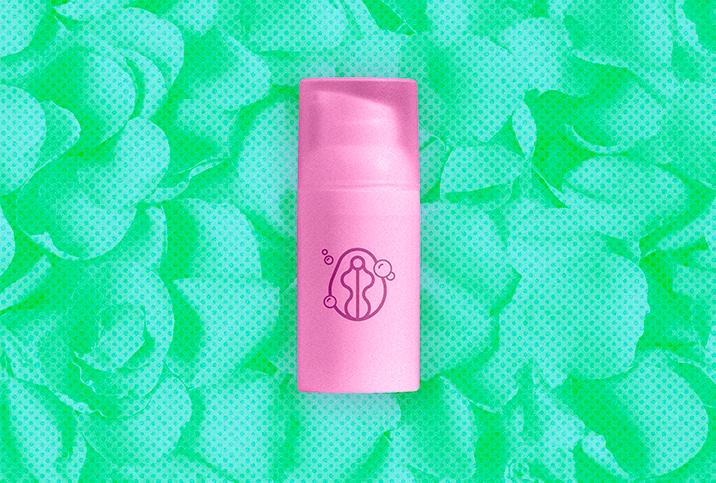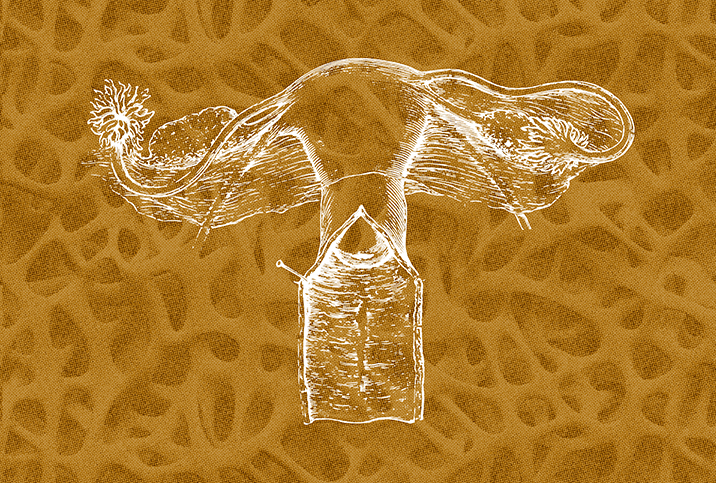Getting to Know Your Vulva

An important though often misidentified piece of anatomy, the vulva and its various functions and malfunctions are usually discussed on the internet or in stilted conversations with close confidantes.
Our collective misunderstanding of what "vulva" actually refers to—many people incorrectly call it the vagina—has perpetuated misinformation, leading to a failure in education and self-advocacy. After all, it's hard to ask for help when you cannot name the body part that needs investigating.
Here is your guide to understanding your vulva and all of its not-so-mysterious powers, as well as how to treat and care for its delicate parts.
What is the vulva anyway?
"The vulva includes our external female genitalia," explained Sameena Rahman, M.D., an OB-GYN in Chicago and the founder of the Center for Gynecology and Cosmetics. "It includes the mons pubis, labia majora [outer lips], labia minora [inner lips], clitoris with prepuce/clitoral hood, vulvar vestibule, urethra, Bartholin's glands and Skene's glands, responsible for arousal and lubrication."
The mons pubis is the cushion of fatty tissue covered by skin and pubic hair that rests above your labia majora and minora. Your vulvar vestibule is the smooth surface inside your labia majora and minora that contains the urethral and vaginal openings.
Bartholin's glands are located on each side of the vaginal opening and their job is to secrete fluid to lubricate the vagina. The Skene's glands are located on the lower end of the urethra in people assigned female at birth (AFAB) and their job is to release a substance that lubricates the urethral opening.
Recognizing misinformation
If you ask any person with a vagina, they likely will interchange the words "vagina" and "vulva," or they may not even know the word vulva at all. Although a lack of sexual health education is largely to blame, marketing for vaginal healthcare should take some responsibility, too.
"We are often not taught the right word to name the vulva," said Cecile Gasnault, brand director of sexual wellness company Smile Makers, based in Singapore. "Even intimate care brands often refer to it as the vagina. But the vulva has a different microbiome and pH. If you have pain on the vulva and you say 'vagina' to your doctor, if they don't ask for clarification, it might lead to misunderstanding."
While improvements in sex education are being made—albeit gradually—there is a long road ahead before everyone can correctly name this body part.
One-quarter of women in the United States do not know where the vagina is located, according to a 2020 poll commissioned by Intimina, a women's intimate health brand based in Sweden. The survey was conducted by OnePoll, which also found 46 percent of women could not identify the cervix's location.
"Our educational system, and maybe our parents, based on shame and lack of knowledge, has failed us," Rahman said. "We have to overcome the shame and stigmas around women's sexual health and build awareness and education so the next generations will have a better time navigating their healthcare."
How do vulvas differ between bodies?
While vulvas are not as unique as our fingerprints, they are not a monolith, either. The shape, color, texture and everything else is individual to your body.
"The vulva and the labia vary hugely in size and appearance from woman to woman," explained Narendra Pisal, M.B.B.S., a consultant gynecologist at London Gynaecology. "They also undergo a lot of physiological changes from being a young girl to having children and after menopause."
Unfortunately, some people with vaginas go to extremes to prevent this natural process by adapting their vulva to "porn specifications." Rates of vulva plastic surgery, called labiaplasty, increased by 39 percent between 2015 and 2016, according to data released in 2017 by the American Society of Plastic Surgeons. Nearly 19,000 labiaplasties were performed in 2021 in the United States, a 36 percent increase over the previous year, according to a report by the Aesthetic Society.
In the face of this pressure, remember that vaginas are rarely perfectly symmetrical and there is no shame in that.
"It is common to have asymmetry in the body and also in the vulva," Pisal said. "There is no right shape or size of labia; having longer labia that sticks out is not abnormal."
How to take care of your vulva and vagina
There is one easy rule for taking care of your vagina: Do not interfere with nature's work. The vaginal opening should be kept blissfully unaware of any "vaginal cleaning" products. It knows what it's doing and does not need chemical assistance to clean itself—internally or externally.
"The vagina is a self-cleaning organ, but the vulva can be washed with water, including between the folds of the labia," Rahman said. "If a person wants to use products, they should only use products specifically formulated to respect and support the vulva's pH and use them sparingly, not to disrupt the vulva's flora. Smells can be indicative of a health issue which could be overlooked if the smell is overpowered by the scent of products."
Keep your vulva breathing with cotton underwear, avoid sleeping in tight clothing, and change wet or sweaty clothing quickly.
Deciding when your vulva needs medical attention is difficult, especially if you are shy about discussing it, but get checked out as soon as anything changes. Monitor your vulva for any lumps, bumps or ulcers, and consult a physician if the change is persistent and doesn't go away. Itching, burning and tenderness could all be signs of various vulva conditions. Get checked if anything concerns you.
Taking care of your vulva requires regular self-checks, too. In fact, getting to know your vulva intimately is crucial, Gasnault advised.
"There is so much shame and stigma built into us by cultural references that it is normal to feel some reluctance at the prospect of knowing our vulva the way we would our face, our legs," she said. "You can use a mirror to simply look at it, maybe mapping out on yourself the different parts. If that feels overwhelming, you can also explore it with your fingers, taking the time to acknowledge the different parts."
If you are still unsure, try "dating" your vulva. Get to know it by asking questions, finding answers for unnamed problems and attentively listening to its needs. Immerse yourself in sex education resources, such as the American Sexual Health Association and Planned Parenthood, and be surprised and inspired by the diversity of vulvas out in the world through projects such as This Is a Vulva and the Vulva Gallery.


















